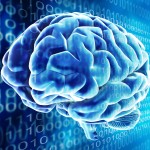 I’ve written before about a number of fascinating projects that are using machine learning and voice analysis to hunt for signs of conditions such as Parkinson’s and Alzheimer’s.
I’ve written before about a number of fascinating projects that are using machine learning and voice analysis to hunt for signs of conditions such as Parkinson’s and Alzheimer’s.
The hope is that early diagnosis of the condition will allow both for better treatment but also an increased ability to research new medicines. Of course, it isn’t just through smart voice analysis that researchers are looking to make those early diagnosis.
Research led by a team from the University of Granada have developed a method that uses high-level data abstractions to allow computers to differentiate between a healthy brain and an ill one automatically.
In a recently published paper, the researchers explain how their machine learning based approach allows them to detect conditions such as Alzheimer’s at an early stage.
Healthy vs non-healthy
The AI enables the researchers to use high-level data abstractions to differentiate between a healthy brain and that of one suffering from a range of conditions, such as Alzheimer’s and Parkinson’s. It does so by automatically extracting the region of the brain affected by the condition.
“The study uses deep learning techniques to calculate brain function predictors and magnetic resonance imaging to prevent Alzheimer’s disease. To do this, we have used different neural networks with which to model each region of the brain to combine them afterwards,” the researchers explain.
The system classifies brain regions using deep learning after each region is defined using the Automated Anatomical Labeling (AAL) system, which is a digital atlas of the human brain. Each part of the brain has been divided according to the regions separated into different sectors in the AAL. This was then used to train the algorithm.
Classification engine
The end result is a system capable of perform powerful levels of classification via both supervised and unsupervised learning to extract just the right piece of information from a collection of brain scans. The system was pitted against a large database of such images from the Alzheimer’s Disease Neuroimaging Initiative (ADNI).
The results show the strong potential of the system to reveal the kind of patterns typically associated with conditions such as Alzheimer’s. The accuracy of the system highlights the potential of such a system to advance our knowledge of the neurodegenerative process involved in Alzheimer’s, whilst also helping with the medical diagnosis process.
Of course, it’s a different approach to that taken by audio based services such as those referenced at the start of this post, and the mobile nature of audio technologies makes such an approach more accessible as they don’t require brain images to function.
Nonetheless, it’s an interesting project and one of a number that is using AI to quickly and efficiently classify medical images and make early diagnoses.